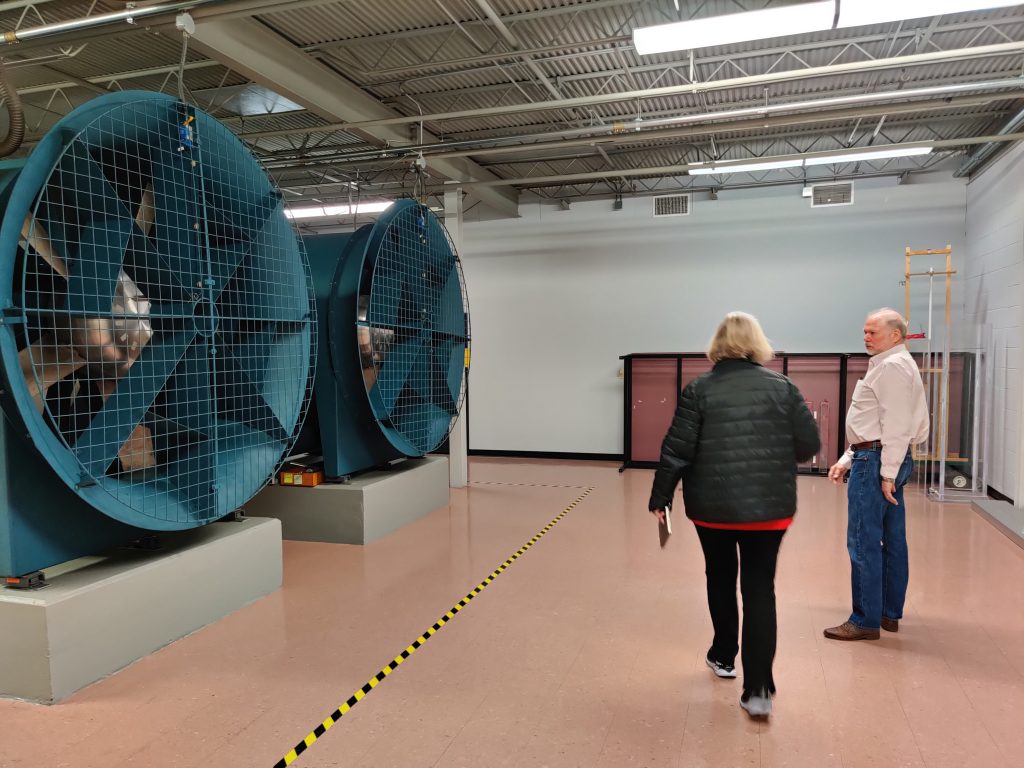Tom Spicer Lab Greets OU Researchers
Recently, my colleagues at OU and I visited the Tom Spicer lab at the University of Arkansas. Our team at OU is interested in performing some tests in low speed wind tunnels to compare with larger scale experiments conducted at OU-AQTLab. This work is an offshoot of the XGEM project, growing out of continued efforts on that front. Together with me on this trip were Lee Fithian, Chenghao Wang, and Elizabeth Spicer who helped me organize this trip. While we were there, Tom Spicer’s lab was conducting some followup studies on the DoD Jack Rabbit III project monitoring chlorine gas releases in a simulated urban environment. It was really interesting to see the tiny, meticulously arranged models of shipping containers that matched the full scale outdoor experiment. Here, they are set up for high speed photography test with a laser spectrometer above to measure gas around the CONEX “buildings.”

It was fascinating to see this established lab in person. There is clear evidence that Tom has been working hard over the past few decades to make this a perfectly run facility. It shows! I was particularly interested to see some of the hardware hacks that have solved problems throughout the years. Between the custom paneling in the re-circulation area, converted mine ventilators, chemical dispersing fog machines, and heat gun tripods, you can see how individuals in that lab have matured its research portfolio over time.

More Than a Tour
We were treated to more than I have pictured here, but I don’t want to show much besides these pictures. While we were assured that nothing Tom showed us on the tour required security clearance, I still don’t want to post anything that might be used to scoop his work. Following our tour of the facility, our group gathered together to discuss plans for a collaborative research project to use resources at both schools to enhance capabilities. We are very excited about this future project, and we hope more will be reported soon. Thanks again to Tom for hosting us. We learned a great deal, and we look forward to working with you.